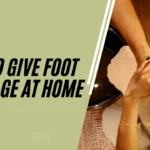What Is a Pinched Nerve?
A pinched nerve, also called a compressed nerve, occurs when surrounding tissues like muscles, tendons, bones, or discs put too much pressure on a nerve. This pressure disrupts nerve function and can cause symptoms such as:
- Sharp or burning pain
- Numbness or tingling (“pins and needles”)
- Muscle weakness
- Radiating pain, often down arms or legs
Common locations:
- Neck (cervical radiculopathy)
- Lower back (lumbar radiculopathy / sciatica)
- Wrist (carpal tunnel syndrome)
- Shoulder and hip areas
Can Massage Therapy Help with a Pinched Nerve?
Yes, massage can help relieve the discomfort associated with a pinched nerve, especially when caused by tight muscles, poor posture, or minor tissue inflammation. Massage doesn’t directly “unpinch” the nerve but reduces the pressure on it by loosening tight muscles and fascia.
Massage increases blood flow, reduces inflammation, and promotes healing. It’s a safe, natural way to manage pain and support recovery.
Common search questions:
- Can massage release a trapped nerve?
- Is it safe to massage a pinched nerve?
- Does deep tissue massage help pinched nerves?
How Massage Helps Relieve Pinched Nerve Pain
Massage therapy helps in multiple ways:
- Muscle Relaxation: Loosens tight muscles that may be compressing the nerve
- Improved Circulation: Increases oxygen and nutrient delivery to the affected area
- Lymphatic Drainage: Reduces swelling and inflammation
- Endorphin Release: Promotes a natural sense of relief and relaxation
Best Types of Massage for Pinched Nerve Relief
Different types of massage can target specific causes of nerve compression:
- Swedish Massage – Gentle pressure, ideal for relaxation and circulation
- Deep Tissue Massage – Targets deeper muscle layers to release chronic tension
- Trigger Point Therapy – Addresses tight knots that may refer pain
- Myofascial Release – Releases tight fascia that can compress nerves
- Neuromuscular Therapy – Treats muscle-nerve dysfunctions
When Should You Avoid Massage for a Pinched Nerve?
While massage is generally safe, avoid it if you have:
- Sudden, severe pain or weakness
- Loss of bowel or bladder control (possible medical emergency)
- Known spinal disc herniation (consult your doctor first)
- Active inflammation or infection in the area
Massage vs. Other Treatments: What’s Most Effective?
Massage is one part of a comprehensive recovery plan. You may combine it with:
- Physical therapy for long-term correction
- Chiropractic care to address spinal alignment
- Anti-inflammatory medications (NSAIDs)
- Stretching and ergonomic adjustments
Most Common Areas for Pinched Nerves and How Massage Targets Them
- Neck: Helps reduce tension in scalene and trapezius muscles
- Lower back: Releases tightness in glutes, lumbar muscles, and hips
- Wrist/Forearm: Relieves tension in flexor/extensor muscles (carpal tunnel)
- Shoulder: Loosens deltoids and rotator cuff
Complementary Therapies That Support Massage Treatment
- Stretching routines (yoga or guided PT)
- Hot/cold compresses to reduce inflammation
- Postural corrections to reduce recurrence
- Supplements (magnesium, B-complex vitamins)
Real Stories: How People Found Relief Through Massage
Many patients report immediate or gradual relief from symptoms like tingling and stiffness after 2–3 sessions of focused massage. For example:
“After just two deep tissue sessions, my sciatica pain reduced by 70%.”
“My wrist felt lighter and more mobile after trigger point work for carpal tunnel.”
Final Thoughts: Should You Try Massage for a Pinched Nerve?
Massage therapy is a proven, non-invasive method to ease muscle-based nerve compression. For mild to moderate cases, it can provide quick and lasting relief. Always consult a licensed therapist or physician if symptoms are severe or persistent.






